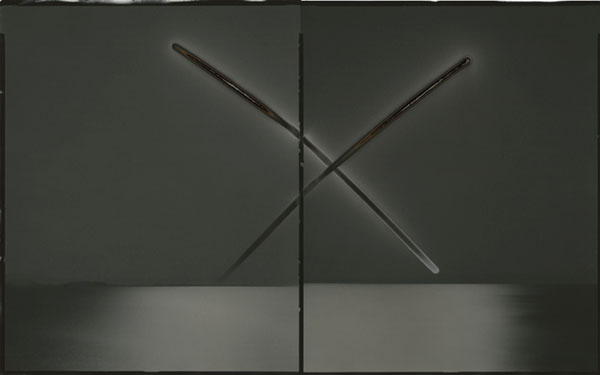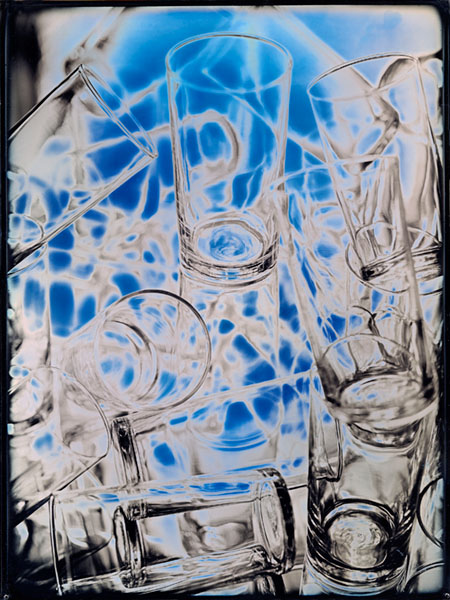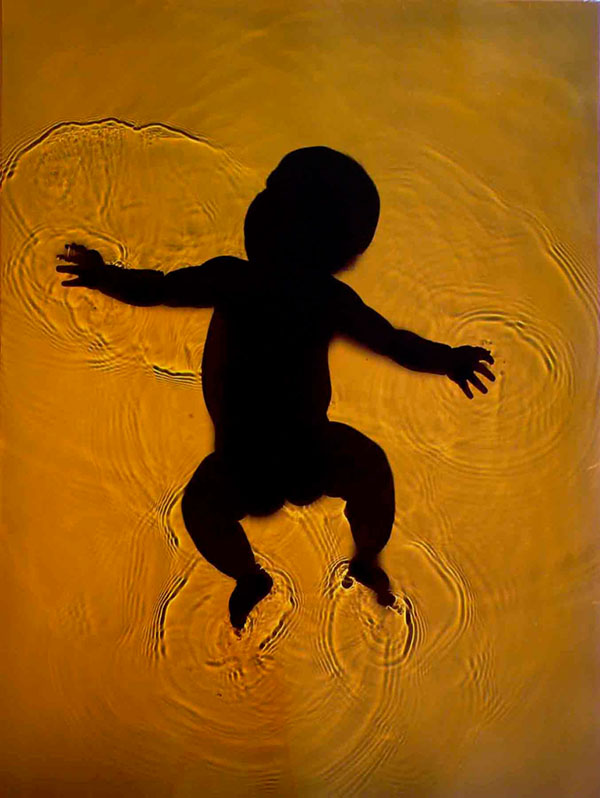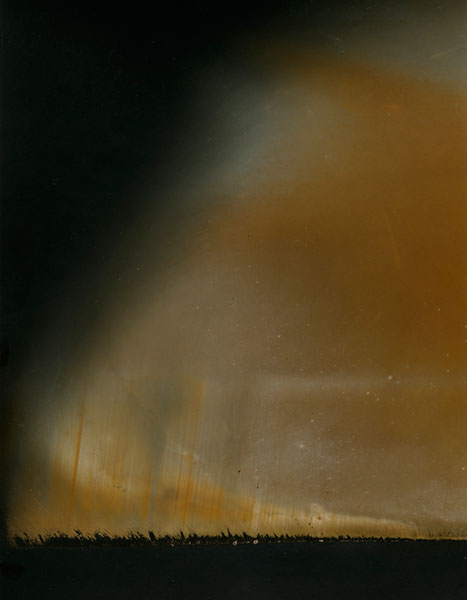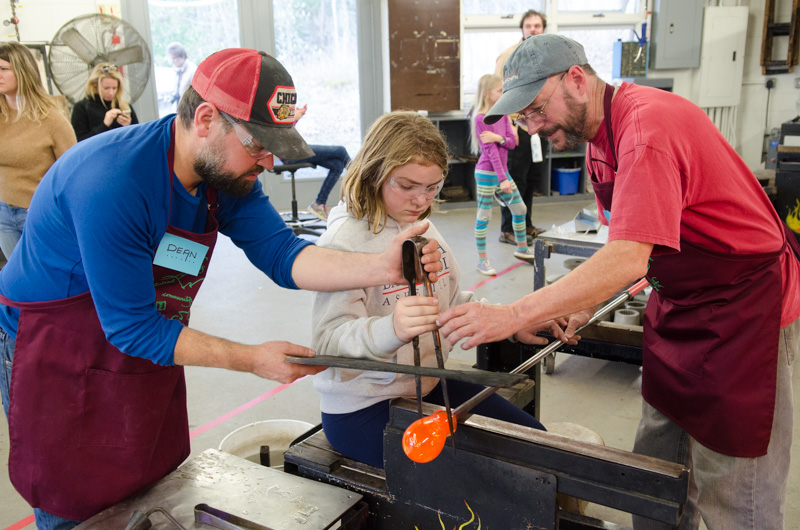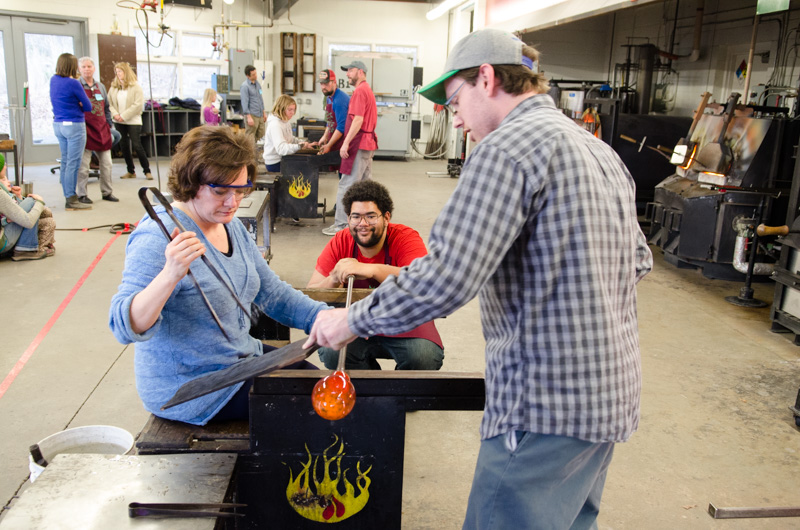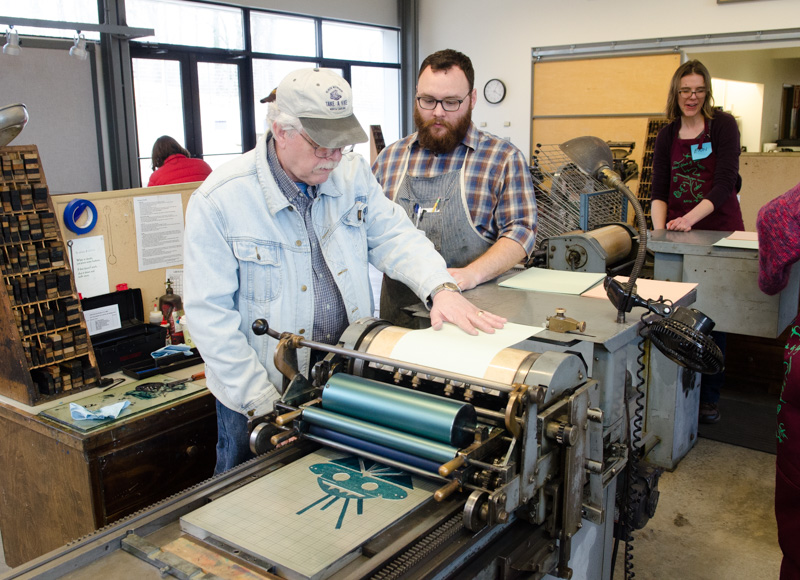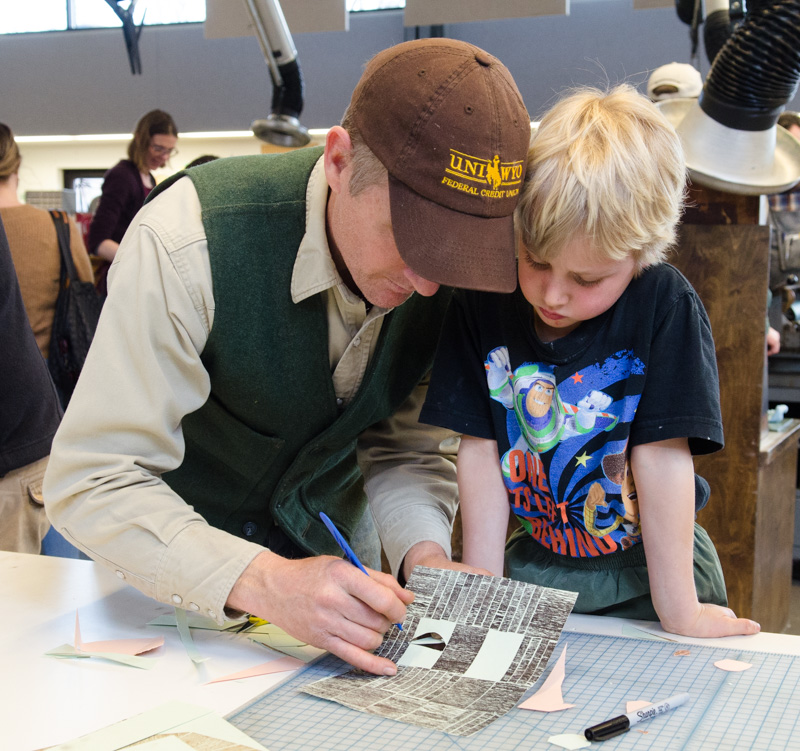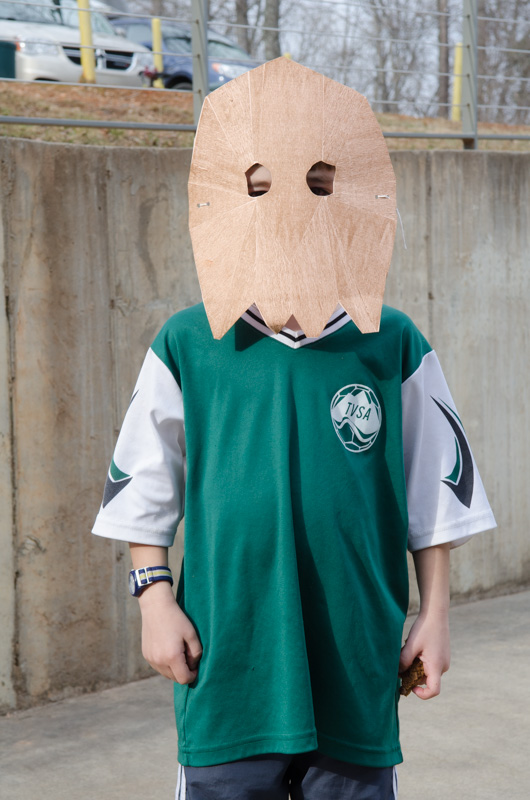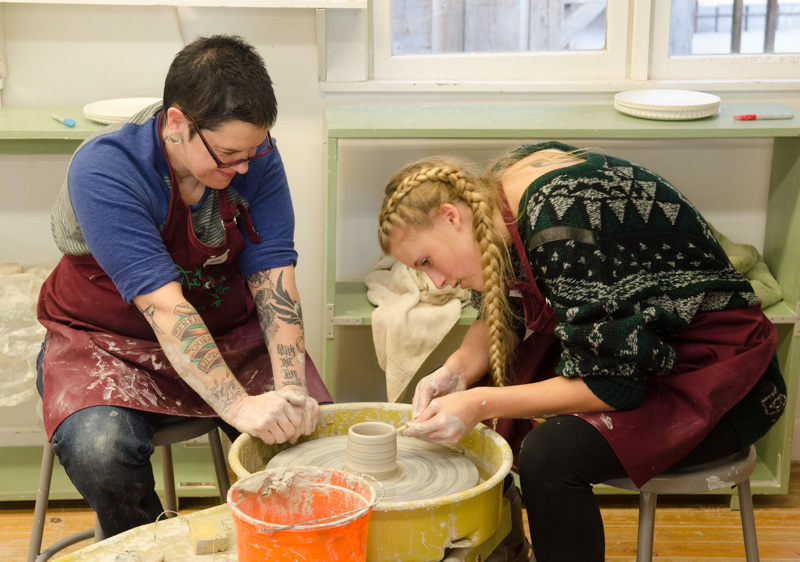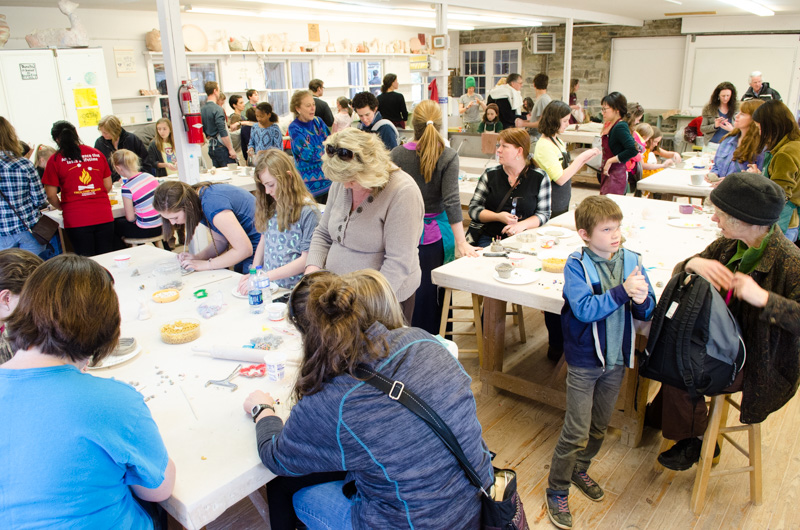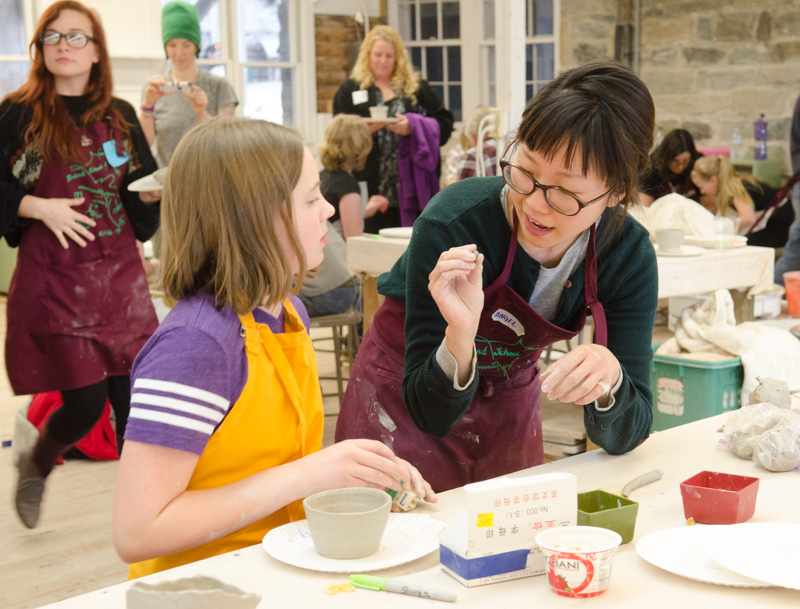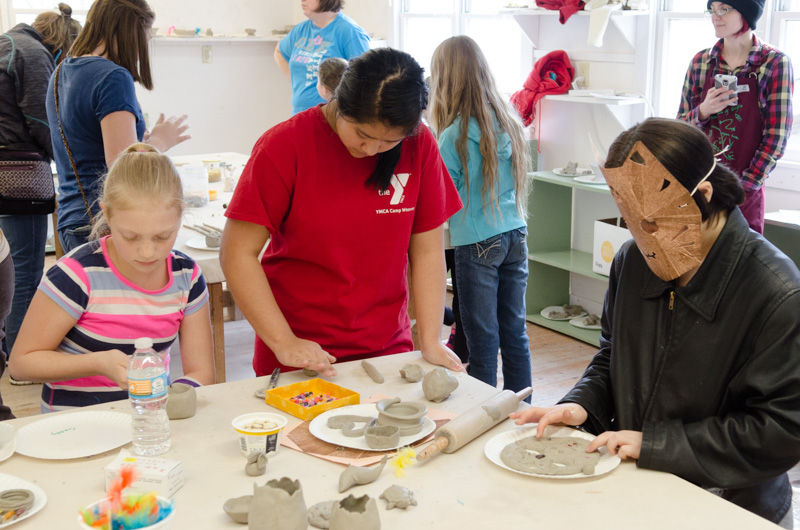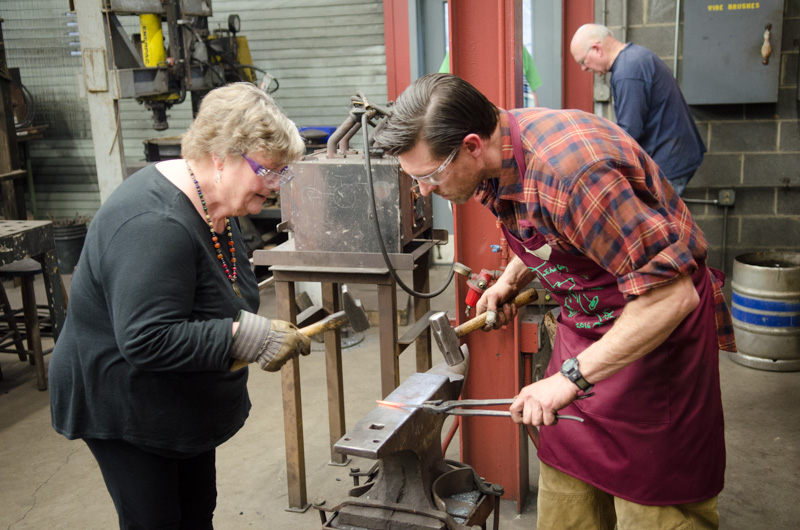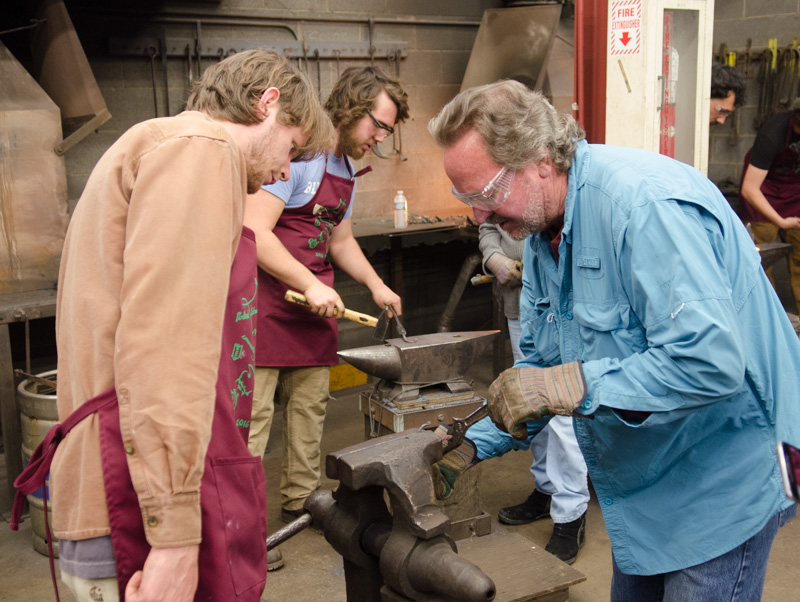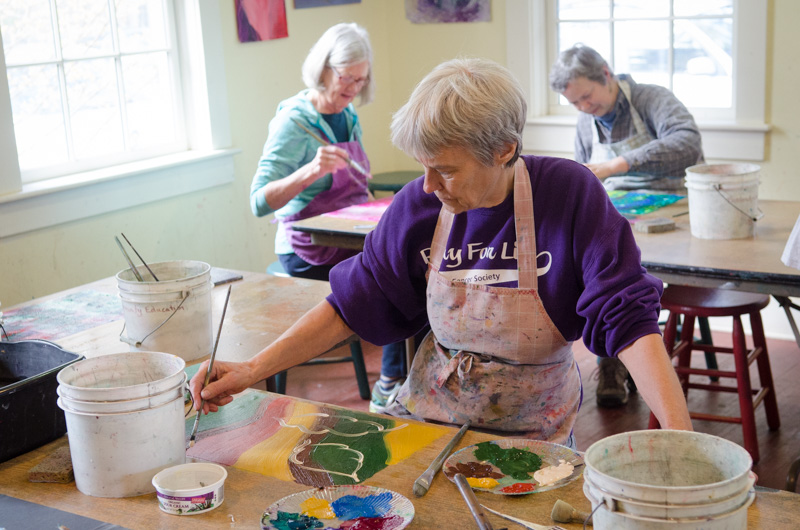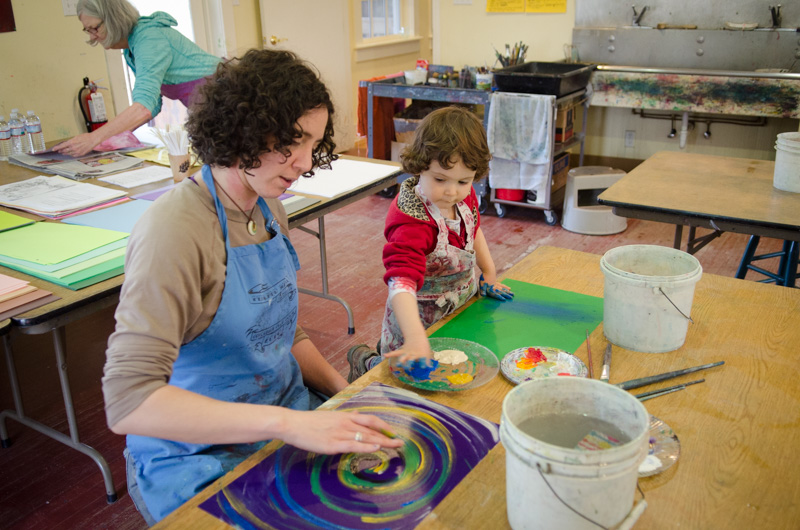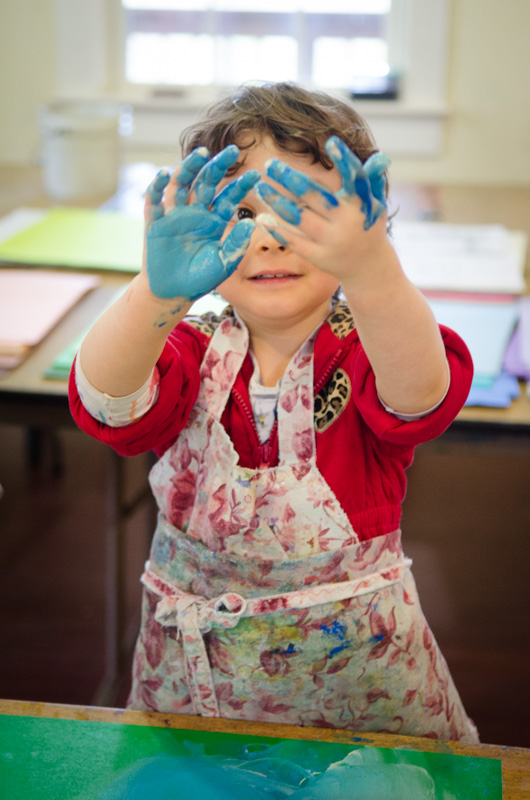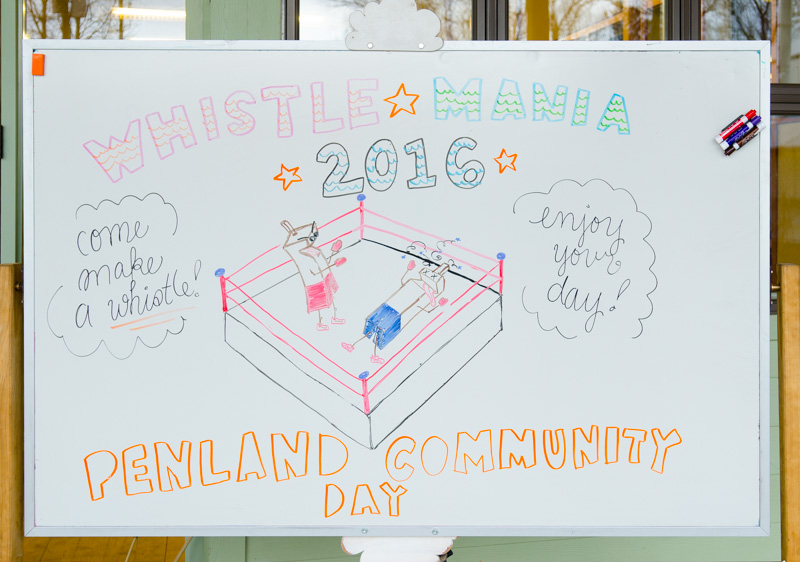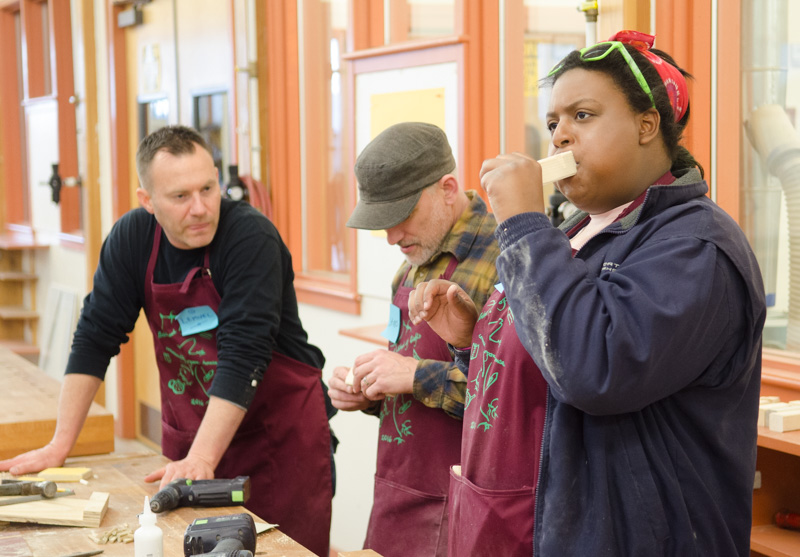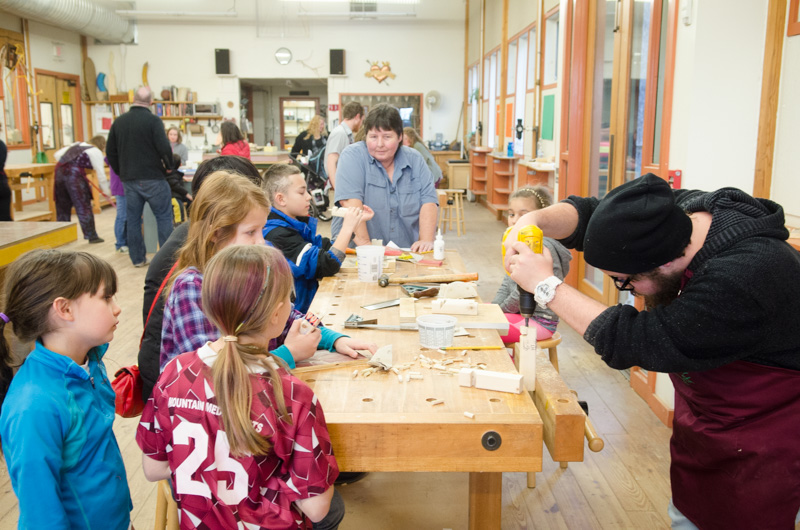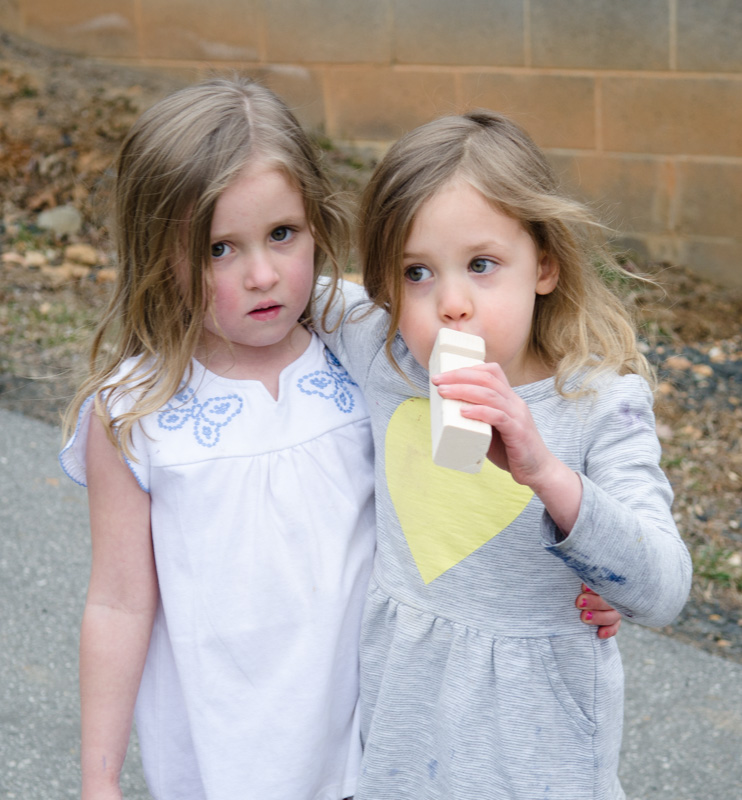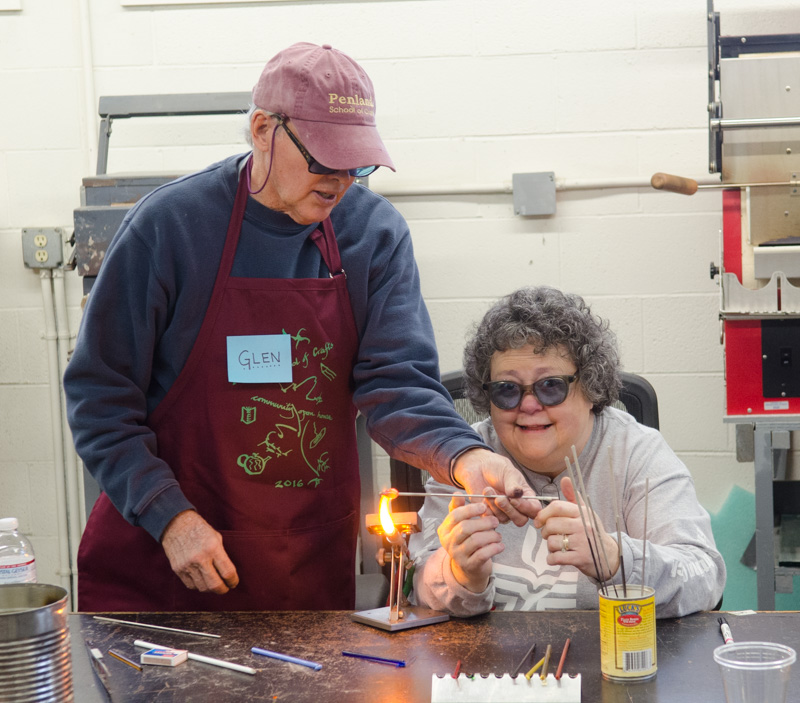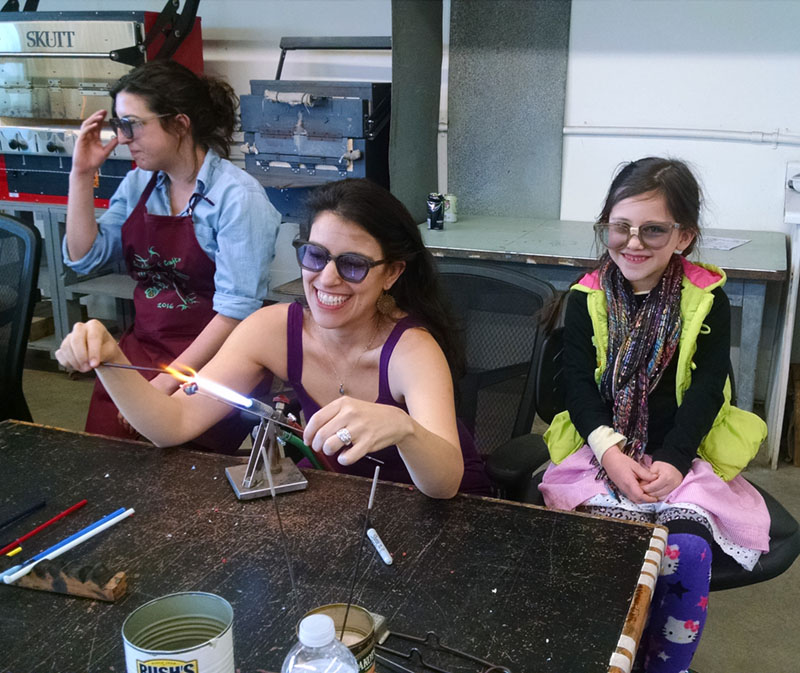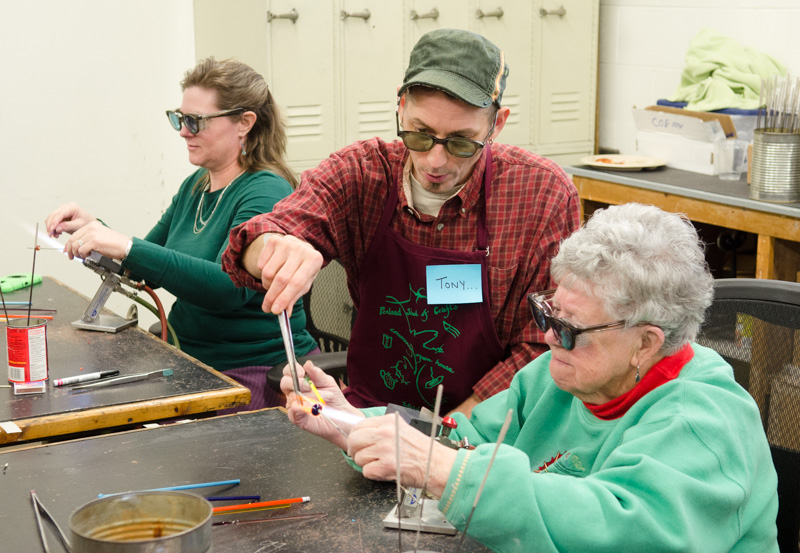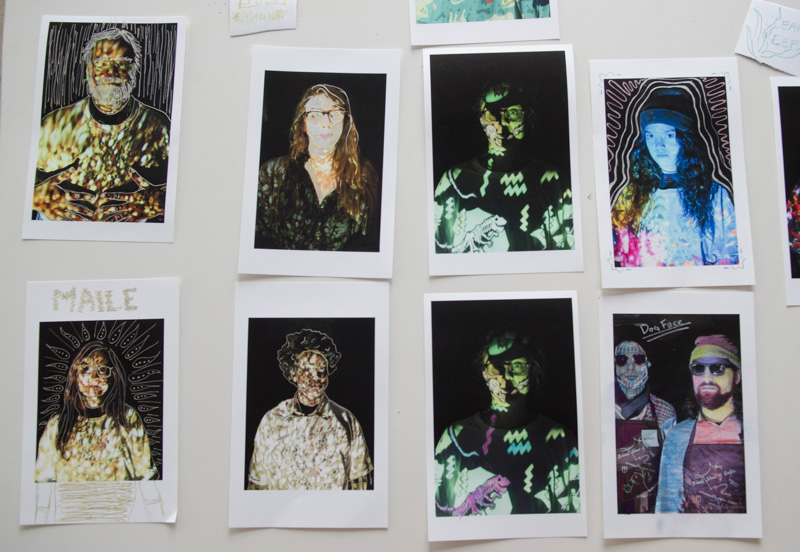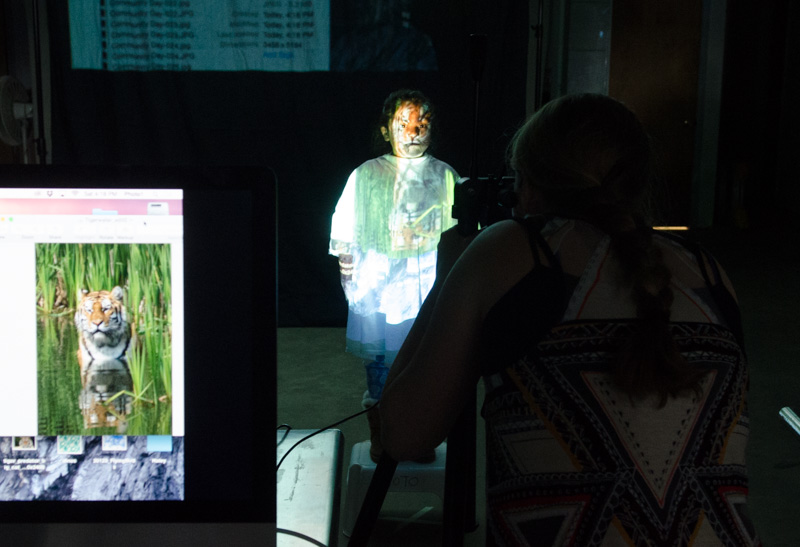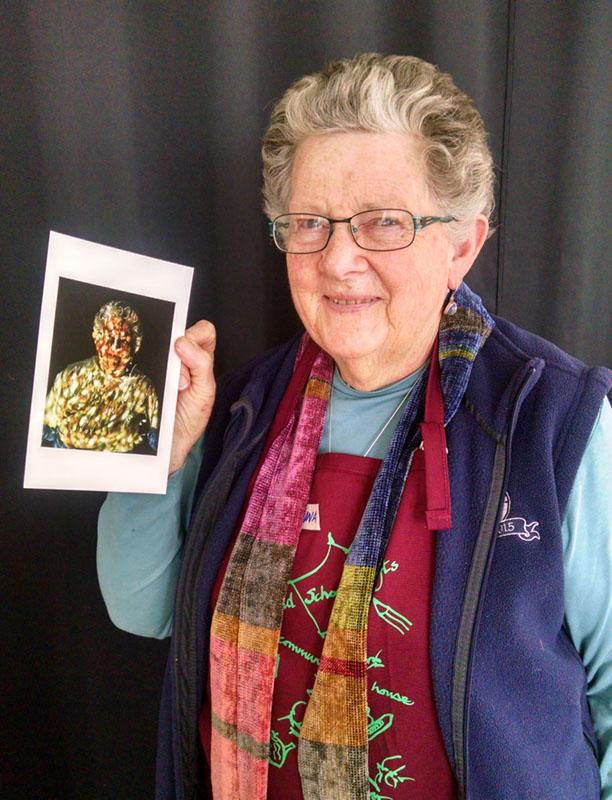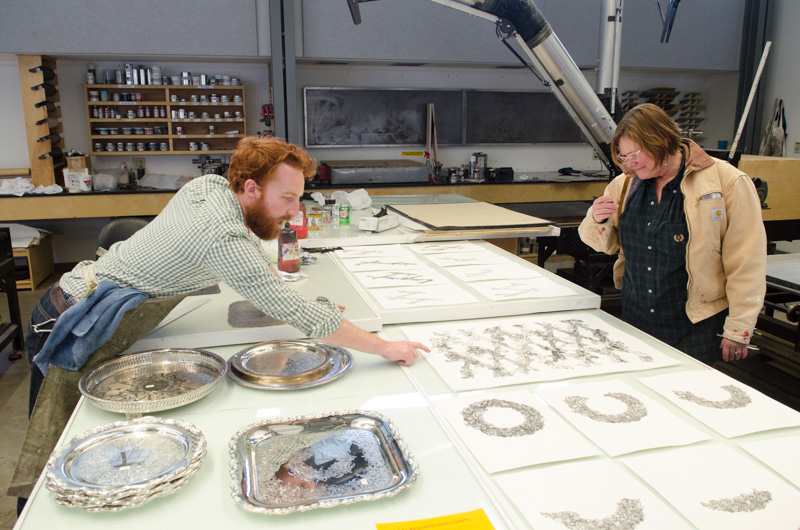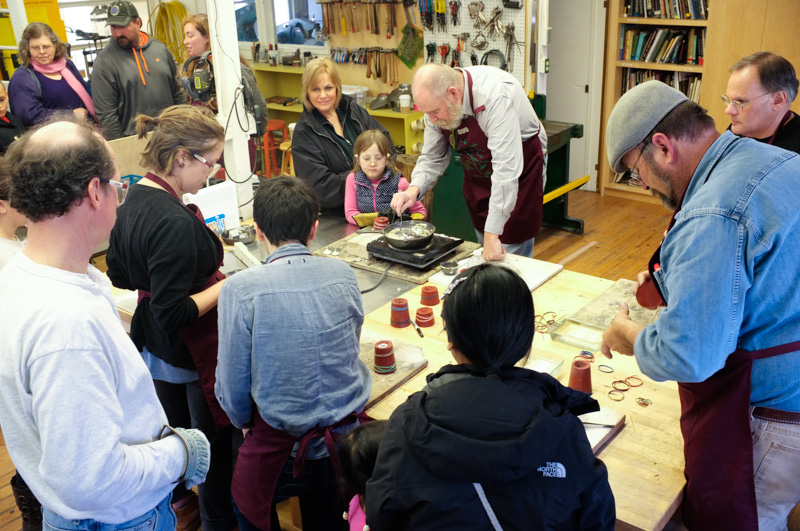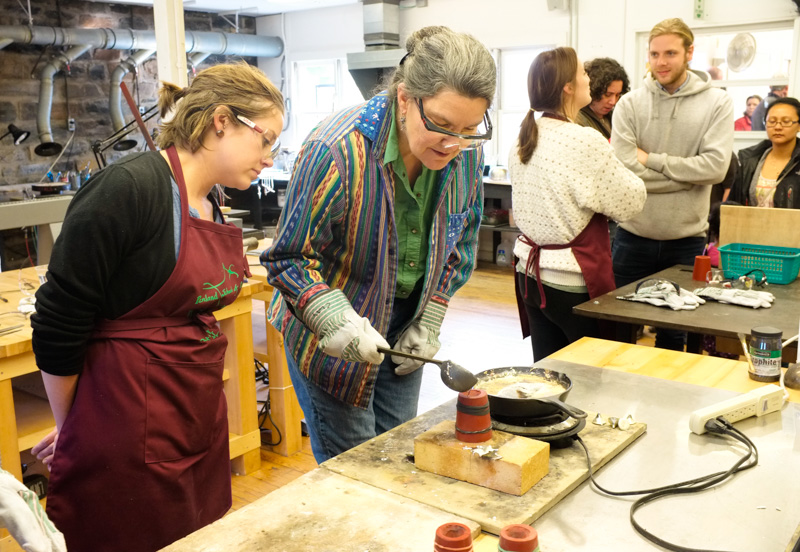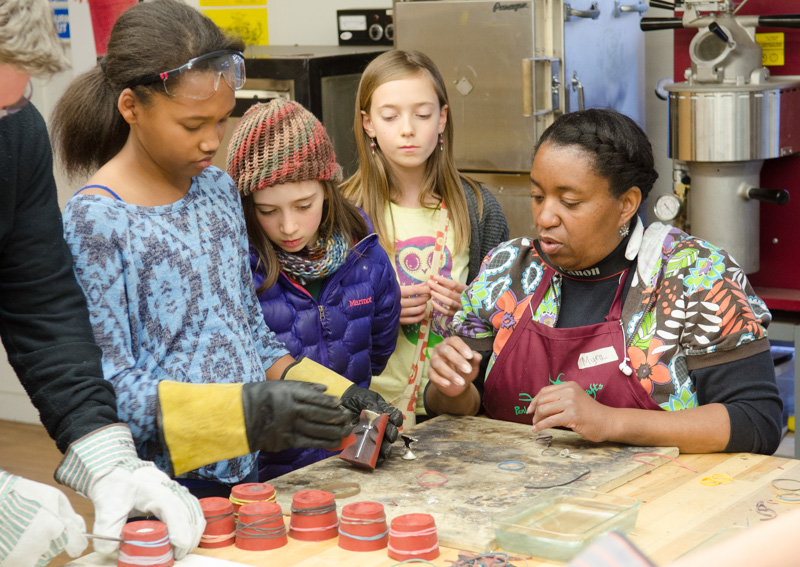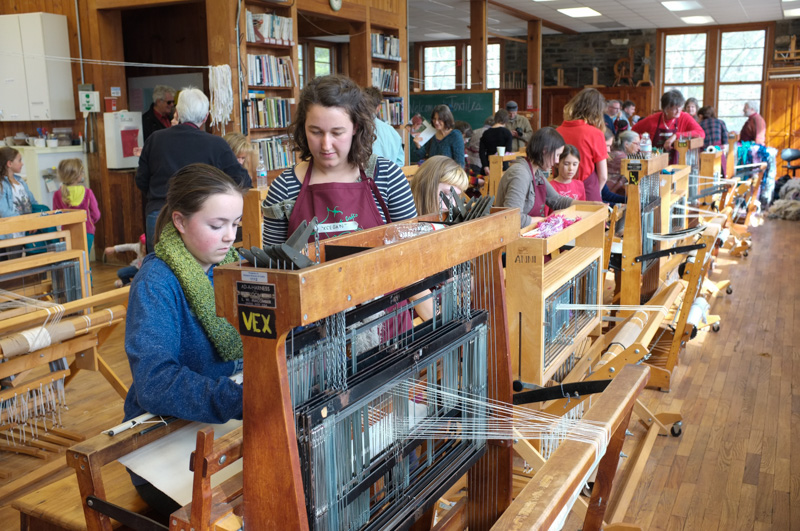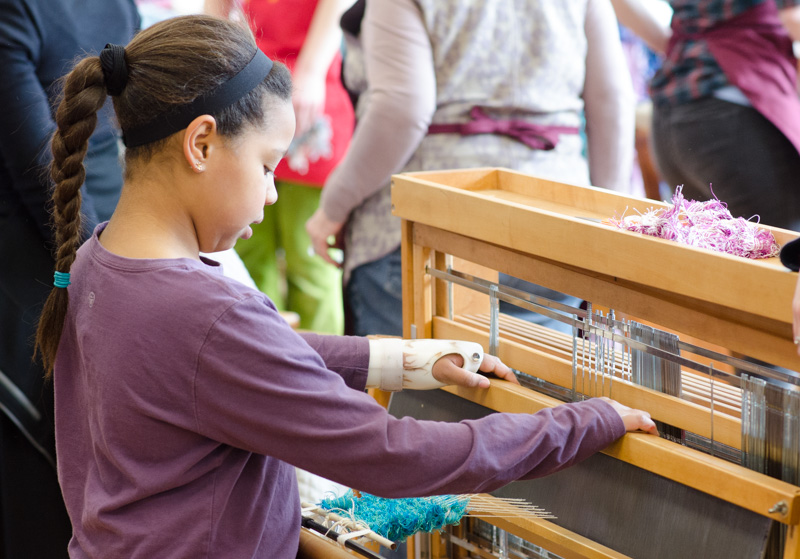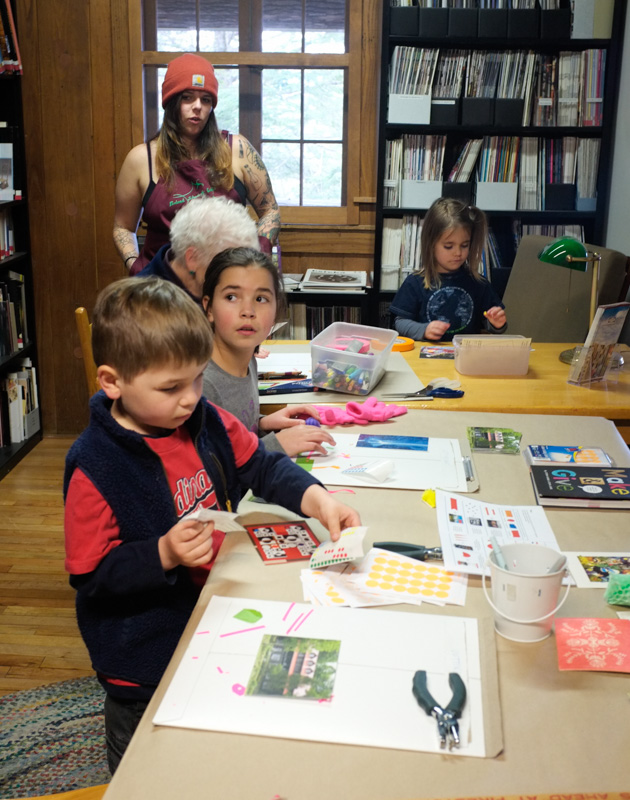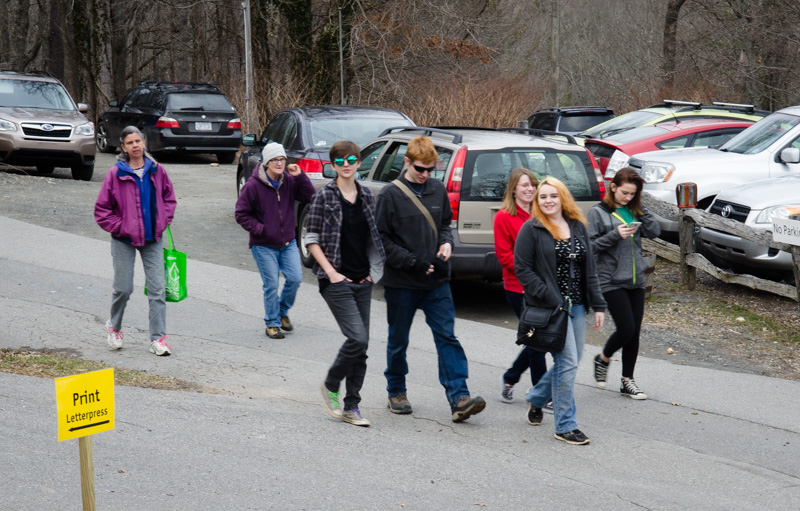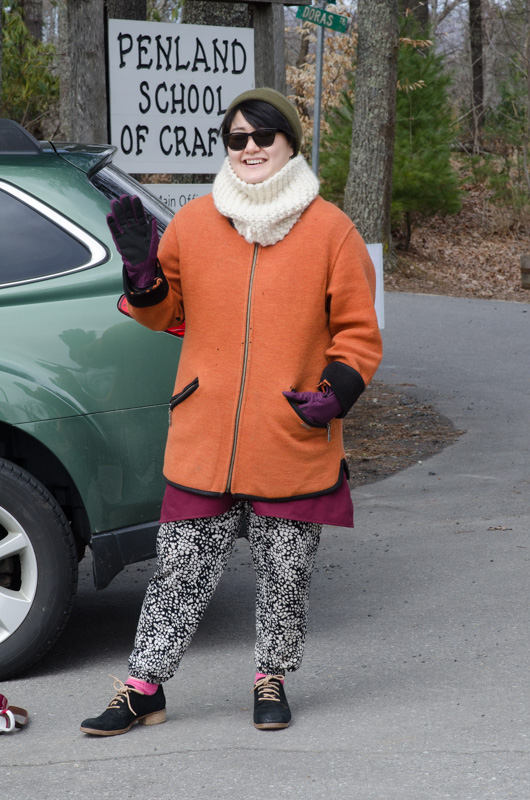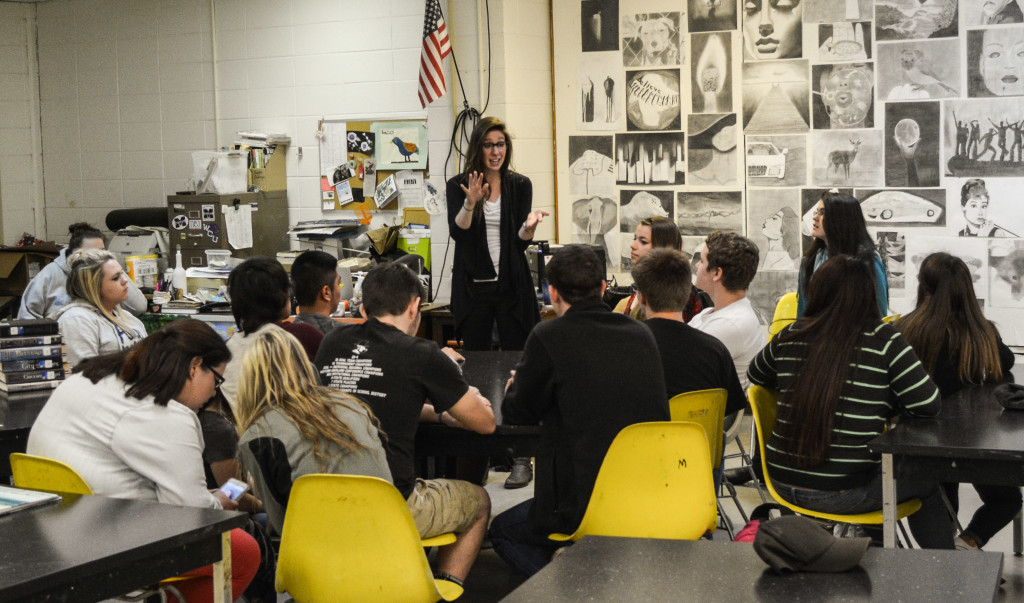
“Photography is not like painting. There is a creative fraction of a second when you are taking a picture. Your eye must see a composition or an expression that life itself offers you, and you must know with intuition when to click the camera. That is the moment the photographer is creative.”
—Henri Cartier-Bresson, 1957
Although darkroom photography is no longer part of many high school art programs, photography itself is more prevalent than ever. These days, most high school students walk around with camera phones in their back pockets, and snapping photos is almost second nature. As a visiting artist at Mitchell High School in Spruce Pine, NC, Mercedes Jelinek’s goal was to show students that these photos could be more than just a way to record and share—they could be a form of creative expression.
“Photos can mean a lot more than just representing likeness,” Mercedes tells her students at the beginning of class on a Wednesday morning. The students are seated in bright yellow chairs around a projector in Jennifer Robinson’s Art 1 class. On the screen, Mercedes is advancing through portraits they took of each other yesterday, each original photograph shown next to an edited version. “What makes this one so good?” she asks. Her students respond with their thoughts about composition, lighting, framing. Despite being taken with simple cellphone cameras, the photos do look good—really good. There’s personality coming through in each one.
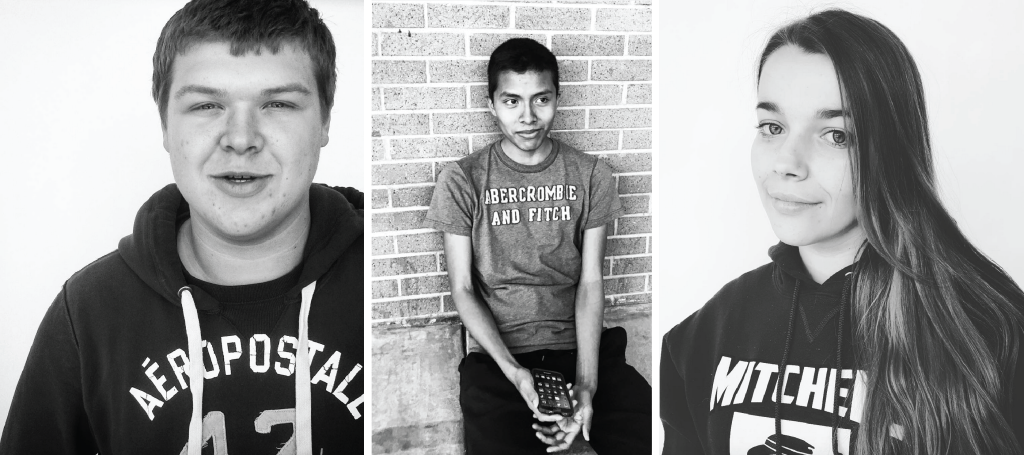
As a resident artist here at Penland, Mercedes has years of professional photography experience—both film and digital—to share with her students. Her three-day visit to Mitchell High was part of the Professional Craft Study for High School Students, one of Penland’s Community Collaborations programs to bring creative experiences to students in the surrounding counties. During her lessons, Mercedes started with basics such as camera controls and simple editing, but her students were soon talking about how to interact with subjects to make them comfortable and relaxed and how to set up a shot to lead the viewer’s eye.
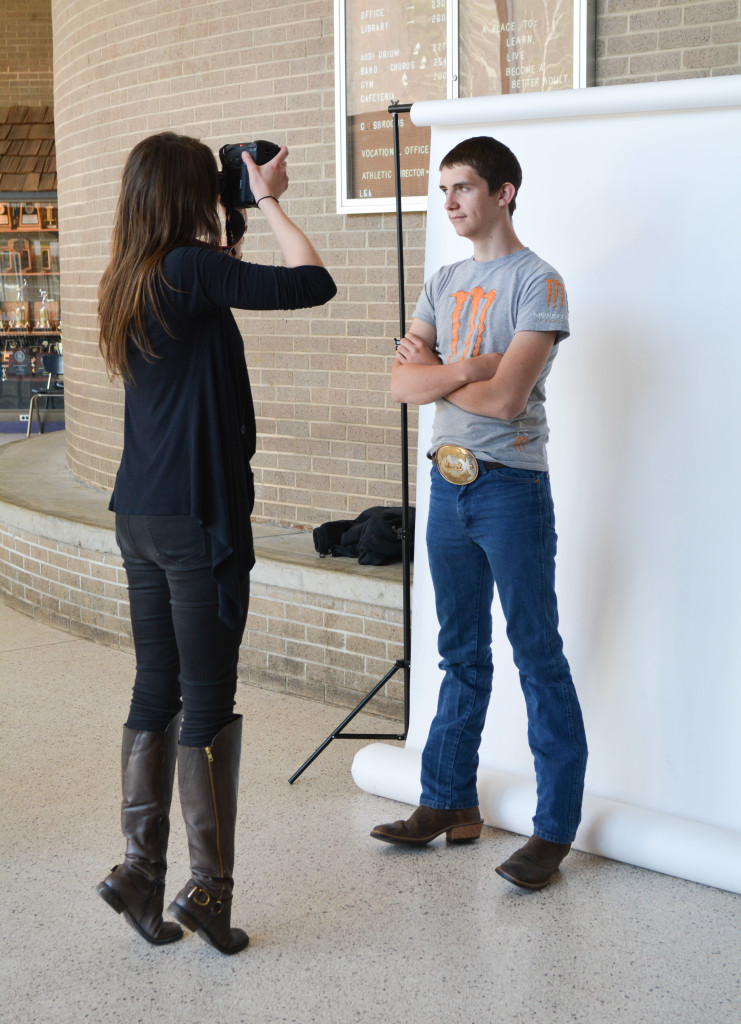
On her final day of teaching, Mercedes used the work of Henri Cartier-Bresson as an inspiration for her students. Cartier-Bresson is known for The Decisive Moment, a book of black-and-white street photography. “To me, photography is the simultaneous recognition, in a fraction of a second, of the significance of an event as well as of a precise organization of forms which give that event its proper expression,” he wrote.
In asking her students to take photographs of “decisive moments” as their final assignment, Mercedes enabled them to bring together the technical concepts they had practiced such as lighting and exposure time with their own view of the world. “Go set up the shot absolutely perfectly, then have somebody walk through it,” she instructed them. “You decide the perfect moment to take your shot.”
There was nothing uncommon about the laughter that followed, or the knots of two or three teens talking in groups, or the students wandering on the grassy stretch in front of the school. What was uncommon was the particular care and attention taken to document it all.
—Sarah Parkinson
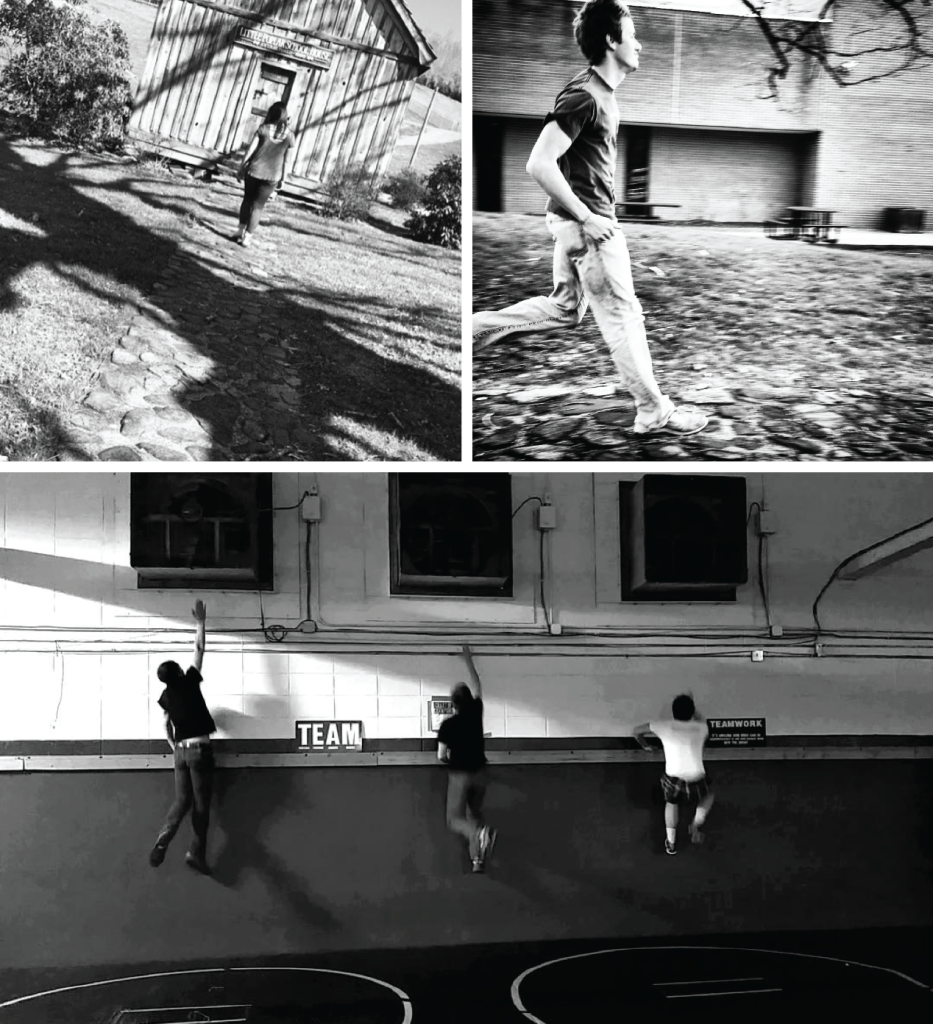
See more photographs from Mitchell High School Art 1 students on the MHS Art Instagram.
All of Penland’s Community Collaborations programs are funded by grants and donations. The Professional Craft Study for High School Students is able to bring artists like Mercedes to Mitchell High School thanks to the generous support of the Samuel L. Phillips Family Foundation Education Partnership Endowment.


